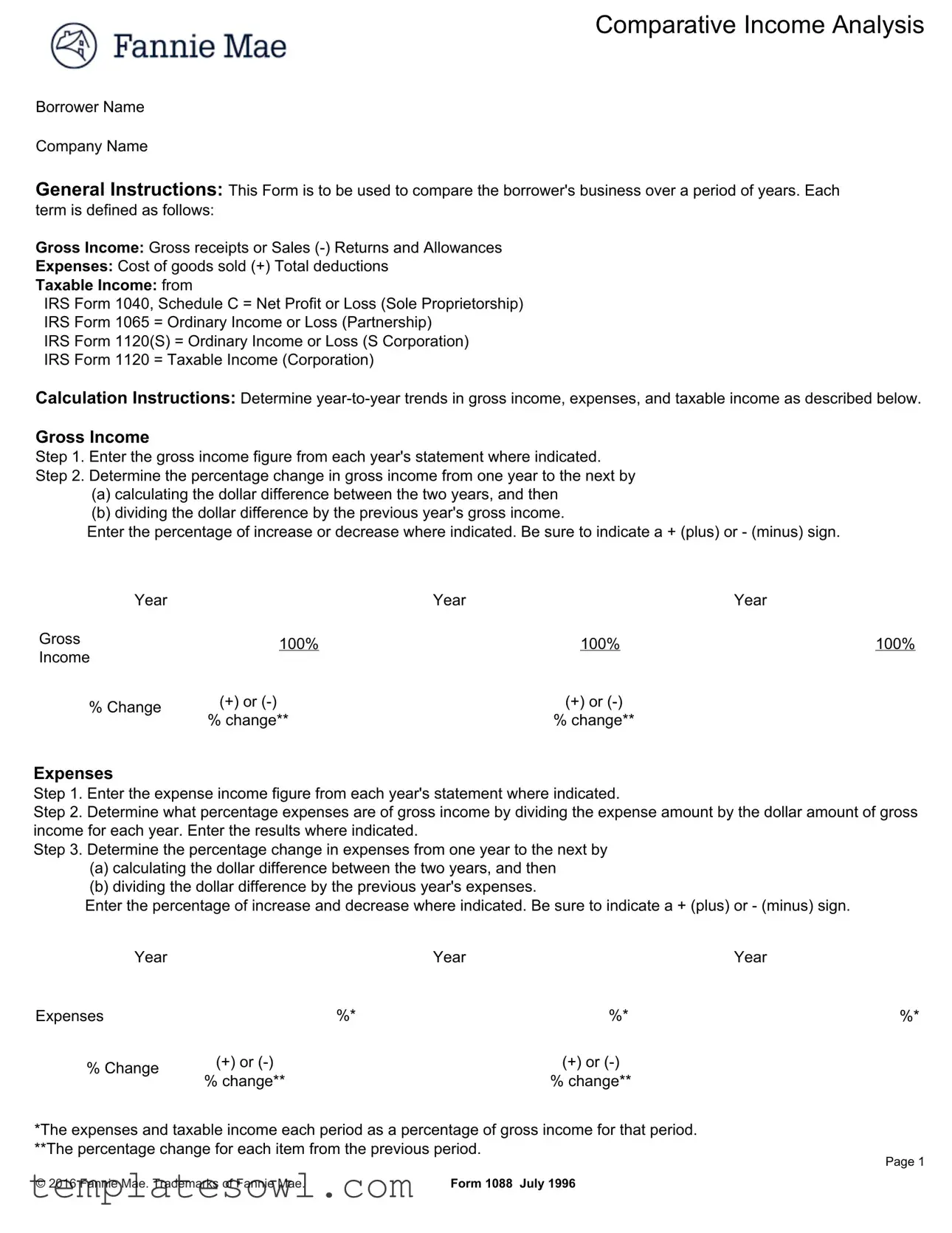What is Form 1088 and why is it used?
Form 1088 is a tax form utilized primarily by lenders to analyze and compare the financial performance of a self-employed borrower’s business over a span of several years. By examining trends in gross income, expenses, and taxable income, lenders can make informed decisions about the borrower’s ability to sustain and grow their business. This form is crucial for assessing the viability of a business for loan approval or refinancing purposes.
How do I calculate Gross Income using Form 1088?
To determine gross income on Form 1088, begin by recording the gross receipts or sales for each year as indicated on your financial statements. Then, subtract any returns and allowances, which adjust your gross sales. The gross income figure is then used to analyze year-to-year performance and calculate percentage changes. This process requires a careful entry of data from financial statements for accuracy.
What types of businesses need to use Form 1088?
Form 1088 is generally used by self-employed individuals, including sole proprietors, partnerships, and corporations, particularly those who need financing. Businesses classified under IRS regulations, such as Sole Proprietorships, Partnerships, S Corporations, and traditional Corporations, would benefit from utilizing this form to provide a clear comparative analysis of their income over time.
What information do I need to complete the expense section?
In the expenses section of Form 1088, you will input costs related to the goods sold and total deductions for each year under review. Calculate the percentage expenses comprise of gross income by dividing the expense amount by gross income for that year. This will help assess how expenses are impacting overall profitability and aid in calculating any increases or decreases in expenses year over year.
How is Taxable Income determined on Form 1088?
Taxable income is determined by referencing specific IRS forms based on the business structure. For a Sole Proprietorship, utilize IRS Form 1040, Schedule C; for Partnerships, use IRS Form 1065; for S Corporations, IRS Form 1120(S); and for Corporations, IRS Form 1120. Enter the taxable income from these forms into Form 1088 to analyze your overall business profitability and calculate percentage changes over the designated period.
What does percentage change indicate in Form 1088 analysis?
Percentage change is an essential analytical tool within Form 1088 that illustrates how business performance has fluctuated over the years. It involves calculating the dollar difference between two consecutive years and then dividing that difference by the previous year's figure. Indicating whether there has been an increase or decrease allows lenders to gauge the sustainability and growth potential of the borrower’s business.
How should I format Form 1088 when printing?
Form 1088 should be printed on letter-sized paper in portrait format. While printing, it may be necessary to select the "shrink to fit" option in your print settings to ensure that all content fits appropriately on the page. Proper formatting is essential to maintain the integrity of the data entered and to facilitate its review by lenders.
What other instructions should I be aware of when using Form 1088?
It’s crucial to ensure all calculations are accurate and well-documented, as lenders will rely on the data for making financial decisions. The form demands a minimum time frame of two years for analysis to provide a productive overview of income trends. Additionally, it’s recommended to retain copies of all underlying documents for verification purposes.


